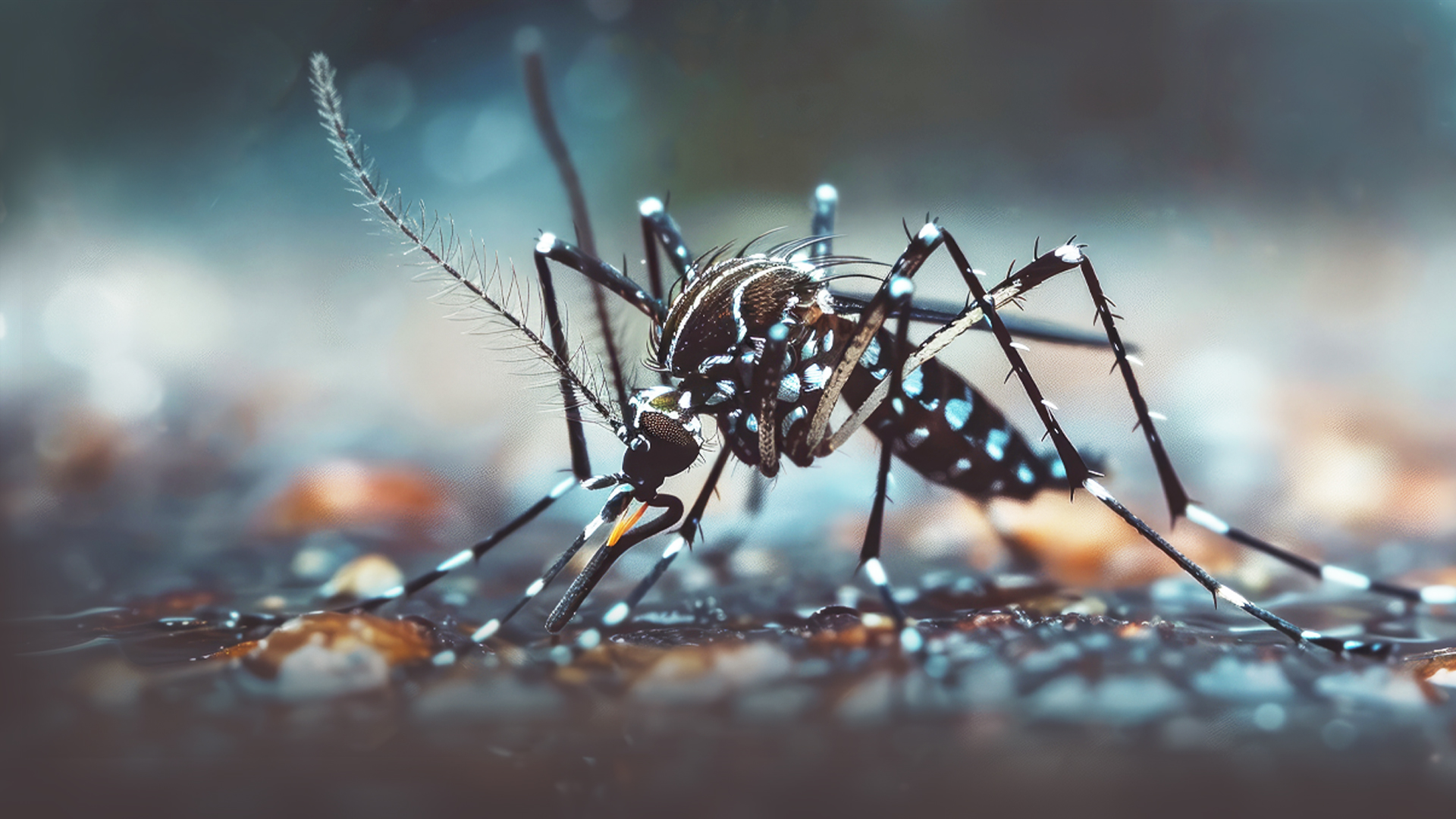Fighting mosquitoes: Biological vs. chemical weapons
During the summer, we often turn to chemical or biological insecticides to combat mosquitoes, aiming to get through these months with as few bites as possible. However, according to László Zsolt Garamszegi, Director General of the HUN-REN Centre for Ecological Research (CER), this may not be the most important concern. Moreover, we need to be mindful of non-native biting mosquitoes due to the diseases they can spread.
At the end of July, Hungarian news outlets reported that experts from the National Laboratory of Virology at the University of Pécs recommend cautious use of chemical treatments. However, people often express enthusiasm on social media when local leaders announce chemical mosquito control efforts. Given the discomfort of nights filled with mosquito buzzing and days plagued by mosquito bites, finding a balanced middle ground between these two approaches can be challenging.

" When considering the cost relative to the size of the area to be treated, chemical control is cheaper and quicker to implement than biological methods. However, the latter can be more environmentally friendly and effective when applied correctly," said László Zsolt Garamszegi, Director General of the HUN-REN Centre for Ecological Research (CER) and lead researcher of the Mosquito Monitor project. Chemical insecticides are only effective if they reach mosquitoes during their active flying period. "Even though spraying vehicles cover the towns in the evenings, they are not always able to apply the insecticide at the optimal time, which reduces its effectiveness," he added.
The biggest problem with chemical insecticides is their harmful impact on the environment: they contain a broad-spectrum neurotoxin that kills most flying insects and can even make its way up the food chain to vertebrates. Some studies suggest that for every 1,000 insects killed by chemical methods, only 1 or 2 are actually the targeted biting mosquitoes. " When people say that chemical insecticides are not harmful to humans, it should be understood that it’s like smoking a cigarette. One might not cause serious harm, but heavy smoking can lead to lung cancer. In large doses, these chemicals do affect humans, which is why we’re advised to close windows and wash any fruit picked from the garden after spraying," the expert stressed.
In addition, chemical insecticides mainly offer symptomatic treatment, as they only target adult mosquitoes and have no effect on the next generation. Biological methods, however, appear more effective because they target larvae developing in water, thereby impacting future generations. Moreover, the biological agents used are specific to biting mosquitoes, so they don’t harm other organisms. However, poorly planned and executed biological control can be ineffective, as applying it at the wrong breeding time or location may not yield significant results.
"The need for thorough preliminary mapping, along with the cost of the insecticide and its application method, increases the expenses of biological control. However, considering its potential effectiveness and the avoidance of environmental damage, it can offer a better return on investment for communities compared to chemical control," the researcher said. He also recommended adopting an integrated mosquito control strategy, which involves regular monitoring of mosquitoes and pathogens and the use of control methods tailored to the actual ecological and epidemiological situation. Depending on the circumstances, this approach can combine biological, chemical, and even backyard control techniques.
Over the past decade, three new invasive biting mosquito species have emerged and spread in large numbers in certain areas of Hungary. Laboratory tests have confirmed that these species are capable of transmitting several pathogens. However, this does not necessarily mean that they pose a significant epidemiological threat to the country. At this stage of the invasion, the primary task for researchers - currently being carried out at the National Laboratory for Health Security - is to determine which viruses these newly emerging species are actually involved in spreading in the domestic environment and how these patterns may change in the future.
From this perspective, it is reassuring that genetic screening of thousands of trapped specimens has confirmed that these species are not currently infected with West Nile virus, chikungunya, dengue, or Zika virus. The only pathogen identified in the samples of Asian tiger mosquitoes was Dirofilaria, a worm that causes heartworm and eye and skin filariasis in dogs. However, it's important to note that this disease can also be transmitted by native mosquito species.
According to the Director General of HUN-REN CER, the mild winters in recent years, coupled with active tourism and trade activities, have facilitated the arrival of new species, and this trend is expected to continue. The three already-known invasive mosquito species only chose Hungary as one of their new homes a few years ago, and we can anticipate the arrival of additional invasive species in the future. Researchers have identified five potential newcomer species that have already appeared in various parts of Europe, making it likely that they will eventually emerge here as well.
The list includes the yellow fever mosquito, which can transmit a virus that causes severe gastrointestinal bleeding and liver inflammation leading to jaundice. While globally distributed, this species was also common in the Mediterranean region of Europe. Although its populations in these areas had declined, others introduced in the last century have reappeared around the Black Sea, as well as in Madeira and the Canary Islands.

